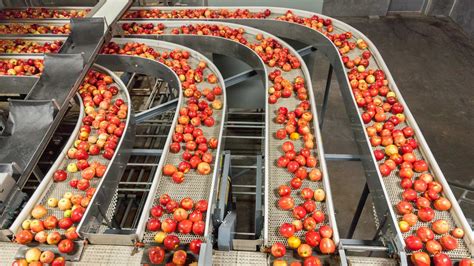The Complete Guide to Food and Beverage Systems
The food and beverage (F&B) industry is vast and complex, encompassing everything from farm-to-table restaurants to multinational corporations. Understanding the systems that underpin this industry is crucial for success, whether you're a restaurateur, a food producer, or simply a curious consumer. This guide will delve into the key components of effective F&B systems, exploring best practices and strategies for optimization.
Key Components of a Robust F&B System
A successful F&B system requires careful integration of several critical components:
1. Procurement and Supply Chain Management: This involves sourcing ingredients, managing inventory, and ensuring timely delivery. Effective procurement relies on strong relationships with suppliers, robust quality control measures, and efficient logistics. Strategies like just-in-time inventory can minimize waste and storage costs. Understanding your supply chain's vulnerability to disruptions is also crucial for resilience.
2. Production and Operations: This is the heart of the F&B system, where raw materials are transformed into finished products. Efficient production requires well-designed processes, skilled personnel, and adherence to stringent hygiene and safety standards. Lean manufacturing principles can help streamline operations and minimize waste. Utilizing technology such as automated equipment or point-of-sale (POS) systems can enhance speed and efficiency.
3. Quality Control and Assurance: Maintaining consistent quality is paramount. This involves implementing rigorous quality checks at each stage of the process, from ingredient sourcing to final product delivery. ISO 22000 and HACCP certifications demonstrate a commitment to food safety and quality. Regular audits and staff training are essential for maintaining high standards.
4. Sales and Marketing: Getting your products or services to the market requires a well-defined sales and marketing strategy. This includes understanding your target audience, developing effective marketing campaigns, and building strong brand awareness. Utilizing data analytics can provide valuable insights into customer behavior and preferences, informing future strategies.
5. Customer Relationship Management (CRM): Building lasting relationships with customers is vital for long-term success. A robust CRM system allows you to track customer interactions, gather feedback, and personalize the customer experience. Loyalty programs and personalized communication can enhance customer satisfaction and retention.
6. Technology Integration: Technology plays an increasingly crucial role in modern F&B systems. From inventory management software to POS systems and online ordering platforms, technology can streamline operations, improve efficiency, and enhance the customer experience. Investing in appropriate technology is crucial for staying competitive.
7. Financial Management: Sound financial management is essential for the long-term sustainability of any F&B business. This involves budgeting, cost control, pricing strategies, and financial reporting. Accurate financial data is crucial for making informed business decisions.
Optimizing Your F&B System: Best Practices
Several key practices can significantly enhance the efficiency and profitability of your F&B system:
- Data-driven decision making: Utilize data analytics to identify trends, optimize processes, and personalize the customer experience.
- Embrace technology: Leverage technology to streamline operations and improve efficiency.
- Focus on sustainability: Implement sustainable practices throughout your supply chain.
- Prioritize employee training: Invest in training and development to enhance employee skills and knowledge.
- Build strong supplier relationships: Foster strong relationships with your suppliers to ensure timely delivery and high-quality ingredients.
- Continuously monitor and improve: Regularly review and refine your processes to identify areas for improvement.
By implementing these strategies and incorporating the key components outlined above, you can build a robust and successful food and beverage system that thrives in today's competitive market. Remember that consistent adaptation and innovation are key to long-term success in this dynamic industry.
